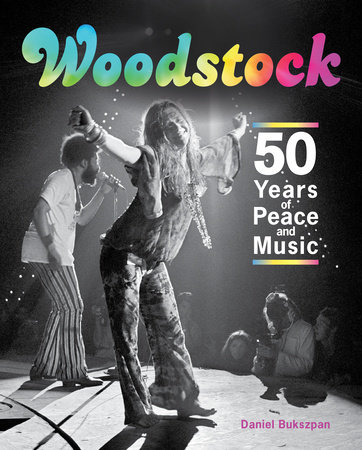Contents Foreword
Introduction
BEGINNINGS Michael Lang
Artie Kornfeld
Joel Rosenman
John Roberts
John Morris
Chris Langhart
Chip Monck
Bill Hanley
The Hog Farm
Bill Graham
Abbie Hoffman
Arnold Skolnick
Joshua White
Max Yasgur
Word of Mouth
Artists Who Didn’t Perform
The Locals
Getting There
The Traffic
Elliott Landy
It’s a Free Festival
THE PERFORMERS: DAY ONE Richie Havens
Swami Satchidananda
Sweetwater
Bert Sommer
Tim Hardin
Ravi Shankar
Melanie
Arlo Guthrie
Joan Baez
First Aid
The Brown Acid
Food
Where’s the Bathroom?
THE PERFORMERS: DAY TWO Quill
Country Joe McDonald
Santana
John Sebastian
The Keef Hartley Band
The Incredible String Band
Canned Heat
Mountain
Grateful Dead
Creedence Clearwater Revival
Janis Joplin
Sly and the Family Stone
The Who
Jefferson Airplane
Drugs
News Coverage
Technical Difficulties
THE PERFORMERS: DAY THREE Joe Cocker
Country Joe & The Fish
Ten Years After
The Band
Johnny Winter
Blood, Sweat & Tears
Crosby, Stills, Nash & Young
The Paul Butterfield Blues Band
Sha Na Na
Jimi Hendrix
ENDINGS Garbage
Coming Home
Births and Deaths
Dick Cavett
Soundtrack Album
The Documentary
Index
Photo Credits
Resources
Bibliography
Acknowledgments
Creedence Clearwater Revival AUGUST 16, 1969 Set list: Born on the Bayou / Green River / Ninety-Nine and a Half (Won’t Do) / Commotion / Bootleg / Bad Moon Rising / Proud Mary / I Put a Spell on You / The Night Time Is the Right Time / Keep on Chooglin’ / Suzie Q Creedence Clearwater Revival was one of the most popular bands of the 1960s. They hailed from the San Francisco Bay Area but stayed away from the region’s trademark psychedelic jams. Instead, they focused on the three-minute single, and they were masters of the form.
“We grew up listening to Top 40 radio, and so the three-minute single, two-and-a-half-minute single, was the format,” said bassist Stu Cook.
He said that when they reached the festival grounds in Bethel, they saw a lot of familiar faces. The experience that they had backstage bore no resemblance to the one that the audience was having.
“We hung out with Santana’s people, the people from Bill Graham’s organization took care of us,” he said. “We hung out with him and drank wine and smoked weed, ate great steaks. Backstage was a different world and a half from the audience, for sure.”
One thing that Bill Graham’s organization could not provide was a reprieve from the hours of delays that plagued the entire festival. Cook said that the band endured a wait of several hours before they could finally set foot on stage.
“There was a lot of technical difficulties throughout the evening,” he said. “We were supposed to play at ten on Saturday night, and I don’t think we got on the stage until after one.”
According to those who saw it, their set was a great one. Many audience members said it was one of the best performances of the weekend.
“Creedence was perfect,” said Mark Yessin, who was twenty when he watched their set. “I thought the performance was great.”
The band does not appear in the documentary or on the soundtrack. Cook said that singer and guitarist John Fogerty refused to allow it on the grounds that the band had played too poorly. Cook was adamant that he was wrong about that.
“We had some technical problems at the start of the set,” he said. “They were worked out, but I know John was irritated to no end about the problems that he was having, so maybe that caused him to have a different take on the evening. But we really did deliver that night. It was one of those not-ideal circumstances, but you try and rise to the occasion, and I believe we did.”
When the set was over, the group left for their next concert. The contrast between that event and Woodstock could not have been clearer.
“We played the next day in a large circus tent with the Nitty Gritty Dirt Band somewhere in New Jersey,” Cook said. “One night you’re playing to half a million people, the next night you’re playing to maybe five thousand or less. It was night and day for sure. It was like, ‘Wow, we just played for half a million people, and now we can count everybody here.’”
Three months later, the group released their fourth studio album, Willy and the Poor Boys, which was their third of 1969. Contemporary reviews called it their crowning achievement, but despite the accolades, the group only had three records left in them.
Guitarist Tom Fogerty, John Fogerty’s older brother, left in 1970, and in 1972, they released
Mardi Gras, their final album. The record was savaged by such critics as Rolling Stone’s Jon Landau, who called it, in a scathing review, “the worst album I have ever heard from a major rock band.”
The group disbanded in October 1972, in a famously bitter breakup over such issues as management woes and personal problems among band members. Even the death of Tom Fogerty in 1990 couldn’t make a dent in the acrimony, and when the group was inducted into the Rock and Roll Hall of Fame in 1993, John Fogerty refused to perform with them, according to
Ultimate Classic Rock. Despite the lingering bad feelings, Cook said that the music he made with the group will endure long after those details are forgotten.
“It’s a very unhappy story, what started out as junior high school buddies playing in a rock and roll band, to the heights that we achieved for a period,” he said. “But the music lives on, and it’s definitely a good catalog. So at least we didn’t screw that part up.”
Copyright © 2019 by Daniel Bukszpan (Author); Amalie R. Rothschild (Principal Photography). All rights reserved. No part of this excerpt may be reproduced or reprinted without permission in writing from the publisher.









